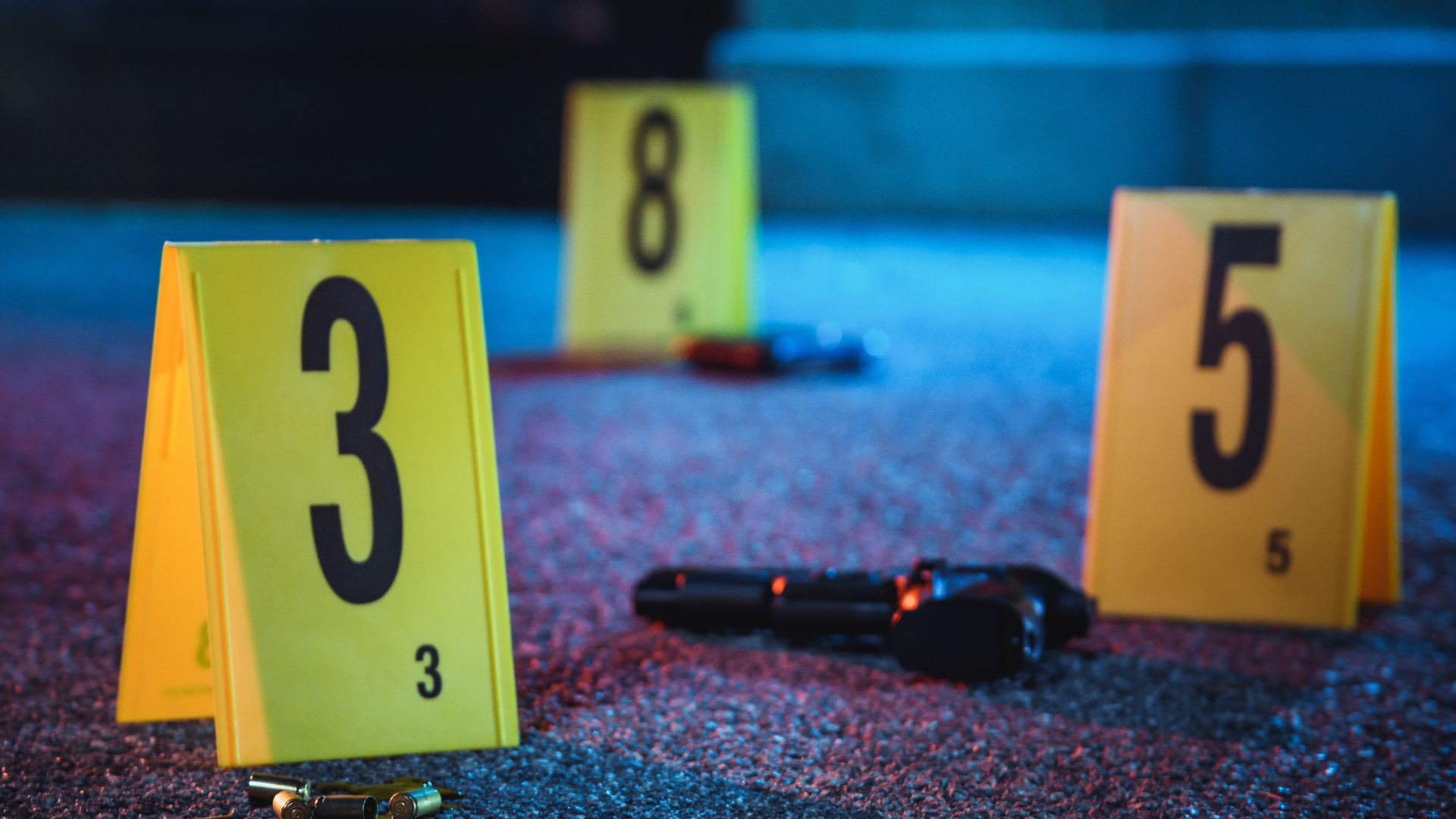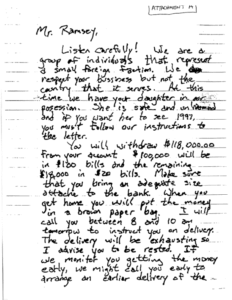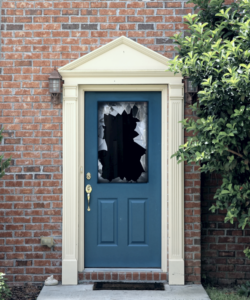By: Andrea Cipriano, MAFP

Investigators will tell you that they treat every death scene as suspicious until they find evidence that indicates otherwise. This is a rule of thumb with crime scene investigating because it’s very possible that a death scene is staged to look like something else took place.
When a perpetrator is trying to throw detectives off their scent after committing a violent crime, many will attempt to confuse investigators by staging the crime scene. They do this to disguise what really happened to buy themself time to either run away, or evade arrest altogether.
Tell-tale signs of crime scene staging include evidence that a body was moved, a weapon being found in a strange place, cleaning agents having been used, and signs of extra or unnecessary damage.
 When confronted with a case that looks questionable, scene evidence, witness statements, and forensic autopsy findings must be thoroughly reviewed before certifying the manner of death.
When confronted with a case that looks questionable, scene evidence, witness statements, and forensic autopsy findings must be thoroughly reviewed before certifying the manner of death.
It’s important to note that staging is not the same as posing. When there’s posing involved in a case, these alterations only serve the fantasy needs of the offender rather than the needs to evade capture, like in staging.
For example, infamous killer Jack the Ripper would sometimes pose his victim’s bodies with their legs spread apart. This ritual was only done for his desires, so this is posing. On the contrary, retired FBI profiler Jim Clemente has noted that it’s possible the JonBenet Ramsey ransom note was a forged element practiced many times, making it an element Clemente believes was clearly staged.
Criminology and forensic profiling experts write a big part of this investigating a scene that’s believed to be staged is “Recognizing the physical impossibility of findings is also of paramount important, both in relation to the decedent, as well as the scene.”
Even with all of this to consider, let’s first uncover why someone would be motivated to stage a crime scene.
Why would a killer stage a scene?
Put simply, a killer will try to stage the crime scene to look like something else took place to confuse the forensic investigators. This is done to put space between themselves and the victim and make it look like it was someone else — or a different situation entirely.
The most common ways an offender may stage a crime scene is to make it look like a natural death, a suicide, a violent sadistic sexual murder, a robbery gone-bad, or an accident.
Because perpetrators are often staging a scene based on the limited knowledge they have, they’ll fall back on what they’ve seen in movies to help them create a new narrative. This is helpful for investigators, because there are red flags they know to look for when looking at a suspicious scene.
Evidence of a Homicide Staged as a Suicide
Studies show that while homicides staged as suicides are rarely encountered by crime scene investigators, there are key red-flags CSIs are taught to look out for.
In the United States, more people die of gun-related injuries for both murder and suicides compared to any other cause of death. The Pew Research Center analyzed data from the CDC, FBI, and other sources, and discovered that in 2020, 54 percent of all gun-related deaths in the U.S. were suicides (24,292), while 43 percent were murders (19,384). But, that’s truly where nearly all similarities stop.
Researchers studying firearm deaths found that the site of the entrance wound and direction of the bullet path can tell investigators if a case was a homicide versus a suicide.
Generally, regardless of the cause of death, in a true suicide, the scene will often not depict someone in the middle of a routine — look cooking, cleaning, or relaxing at home. Often suicides take place in someone’s home, and appear premeditated.
Other evidence that a homicide is staged as a suicide includes:
- A weapon found in the non-dominant hand, or a wound that is physically impossible for someone to inflict on themself;
- If the body was moved post-mortem;
- If there is no note left behind, or a note with a message that is suspicious;
- A struggle is cleaned up; or,
- There are additional wounds that don’t match up with a suicide.
Evidence of a Homicide Staged as a Robbery
 A 2014 study looking at 115 staged homicides in the United States to determine common elements found that most staged robberies followed the same narrative: a home-burglary gone-wrong.
A 2014 study looking at 115 staged homicides in the United States to determine common elements found that most staged robberies followed the same narrative: a home-burglary gone-wrong.
For example, say a husband killed their wife in a fit of rage inside the home they share. After they killed their wife, the husband most likely realized that they would be the prime suspect. To combat being investigated by police, they would start to act the way a violent robber would act, and then ransack their own house to make it look like a robbery gone wrong.
Staged robberies often have the same stereotypical evidence patterns: scene ransacking, breaking a lock or a window, valuable destruction, and a weapon from inside the house.
Other evidence that a homicide is staged as a robbery includes:
- Broken points of entry from inside the house (like a window shattered from the inside-out);
- Valuables still on the property (because the perpetrator was never taking anything out in the first place);
- Superficial offender self-injury to make it look like they fought off a criminal;
- And the weapon being found in the house (because, again, the perpetrator was never taking anything out in the first place); or
- Excessive violence against the deceased compared to the “survivor/perpetrator”.
Of course, with any detective work, the presence or absence of any of these evidentiary pieces does not indicate entirely whether a crime scene was staged or not. Investigators look at the totality of a situation, as anyone should while doing citizen detective work.
The rhyme or reason as to why a killer would stage the scene to look one way over another is also completely up to a case-by-case basis. If someone had a history of depression, the suicide staging may be more plausible for an offender, whereas a suspicious partner may want to make it look like a home-invasion gone wrong given the circumstances.
That being said, criminals need to be incredibly sophisticated to successfully stage a scene. Often, a killer’s plans are foiled, and investigators catch on quickly that something isn’t right. The killer will often leave their own trace evidence from their own body or clothing at the scene. Because of this, it’s rare to have cases being certified with an “undetermined” manner of death. But, when this is the case, it’s not something that should be taken lightly, as it has profound ramifications on how a case can be further investigated.
If a case is deemed “undetermined,” a second-opinion may be warranted, or the investigation may have to simply play itself out with other methods of detective work.
Additional Reading: Step-By-Step for Logging a Crime Scene
Andrea Cipriano is a Case Researcher and Content Specialist at Uncovered, where she writes for the twice-weekly true crime newsletter, The Citizen Detective. Andrea graduated with a Master of Arts in Forensic Psychology from John Jay College of Criminal Justice where she focused on researching and peeling back the criminal mind. Andrea believes that it’s never too late for justice.
